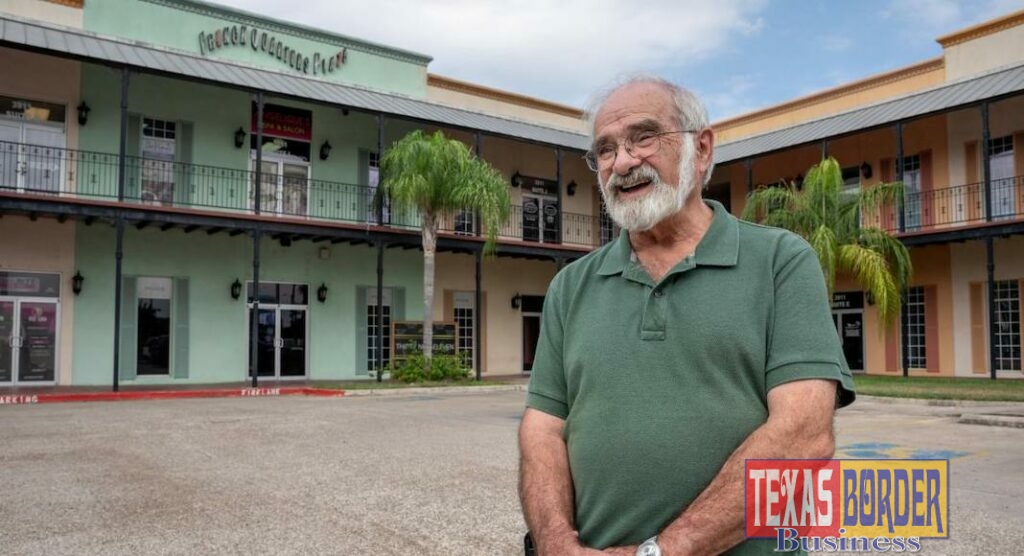UTRGV professors explain why ‘Devil at the Disco’ folktale still teaches lessons after 40 years
Texas Border Business
Story by Amanda A. Taylor and Amanda L. Alaniz
RIO GRANDE VALLEY, TEXAS – “Folklore has no beginning and no end.”
So concludes author Adeline Short Dinger, in her book, “Folk Life and the Folklore of the Mexican Border.”
The quote refers to the power of folklore – stories told from person to person. Over time, those stories become part of the culture, and often survive much longer than the storytellers who help keep them alive.
One of the stories that lives on in the Rio Grande Valley is the notorious tale of the girl who danced with the devil.
The “Devil at the Disco” or the “Devil at the Dance” folktale centers around a young girl who liked to go out on the weekends, and, despite her parents’ warnings about not going out during Holy Week, she ended up at Boccaccio’s –the most popular nightclub in McAllen – the night of Good Friday in 1979.
Amid the dazzling lights and pop music, a tall, handsome stranger walked in, elegantly dressed and ready to sweep the girl off her feet. Literally.
“At midnight sharp, this extremely well-dressed young man wearing a cape comes in and walks straight to her and asks her to dance,” recounts Dr. Mark Glazer, a retired UTRGV legacy professor of anthropology.
“They dance, they start to go around and around, and they start moving up and up until they reach the roof. He then drops her and disappears. When he disappears, the smell of sulfur is left behind.”
That smell of sulfur? The devil’s trademark.
Though variations of the story change, it was discovered that, as the couple danced, the handsome stranger, assumed to be the devil, had one hoof and one chicken’s talon in place of feet.
Chaos ensued. In some versions of the story, the girl had burns where the devil touched her. Other variations claim the girl died on the spot, while others say the girl went crazy and is still alive and living in the Valley – still waiting for her handsome stranger to return.
But … did the story actually happen?

Dr. David Bowles, assistant professor in the UTRGV Department of Literatures and Cultural Studies, says there are three possibilities.
“One, that the devil actually appeared. I don’t know, I’m kind of a skeptic, but that’s clearly a possibility,” he said.
“The other one is, at the time, Boccaccio’s 2000 was known for these extravagant pranks or attention-grabbing activities, and it’s possible that they staged the whole thing so people would remember this event,” he said.
“And the third possibility – the one that I think is closer to the truth – is that the girl had a seizure. It’s a club and there are a lot of strobing lights, so if she was epileptic, it’s possible that she started having seizures.”
On this particular night, he said – Good Friday 1979 – it also happened to be Friday the 13th, a bad omen among the superstitious, so it is highly probable that Boccaccio’s took advantage of that and tried to prank the club-goers. (The site of where Boccaccio’s 2000 once stood is now a shopping center on North 10th Street in McAllen.)
While the details of the story change from person to person like a game of Telephone, the fact is that this story is actually much older than the 1979 McAllen event.
“This is the version of what happened about 40 years ago, but the story is an ancient one,” Glazer said. “It is a story that comes from Europe, medieval Europe most likely. One of the important items here is that the devil dances. Also, the devil is always extremely well dressed, and what he will wear is going to be very up to date.”
While the story’s origins are unknown, the story has become a prominent folktale within the region, with lessons based in religion, obedience and trust.
As it will differ from generation to generation, the lessons revolve around important rules: Don’t go out during Holy Week; don’t disobey your parents; and certainly, don’t dance with people you don’t know – even the handsome ones.
“I think the lesson is going to vary according to the person telling the story,” Bowles said. “My grandmother wanted us to learn the lesson from the story that you shouldn’t go out without your parents’ permission because something bad will happen.
“More than anything, I think it’s just meant as a general warning for young people that you need to constrain yourself, have respect and control. Having fun is fine, but dancing with the devil is not a choice you want to make.”
“The Devil at the Disco” is as popular as tales such as La Llorona (The Crying Woman)and La Mano Pachona (The Bad Hand) – stories that most Valley natives can remember from their childhood.

For Bowles, it’s stories like these that help kids realize there are things to be afraid of in the world and these stories, while mostly fiction, help make that point.
“These stories, you tell them to kids, like, ‘Hey, ‘ojo!’ (be careful). Or, ‘Hay monstruos,’ because there are monsters in this world,” Bowles said. “Maybe they aren’t La Llorona and lechuzas (witches that turn into owls), but other monsters.
“And getting kids to have a thick skin and a sense of caution about dangers in the world when they are little may help them survive some of the things that the Mexican American community submitted to all the time,” he said.
For his part, Glazer says that if you want to get to know a culture deeply, you should get to know the folklore because the stories are entrenched in daily life, are handed down from generation to generation, and can explain much about a community’s belief system.
And since there is rarely a true point of origin, the stories have the power to transcend time and place.
“Folklore is about two things: what’s in our hearts and what’s in our minds. And the interrelationship between the two makes it very powerful and talked about,” Glazer said.
“Devil at the Disco is an extremely important story in the folklore and the history of the Valley, and it touches on very important dimensions of Mexican American family life.”























